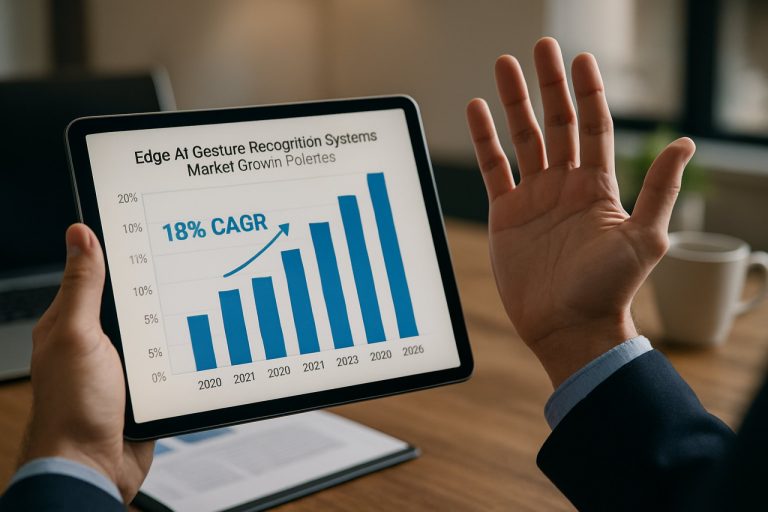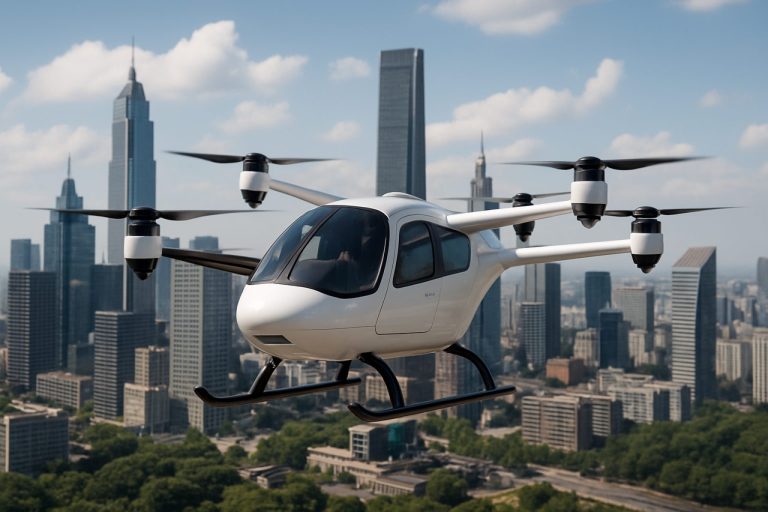
Wind Farm Decommissioning Services Industry Report 2025: Market Dynamics, Technology Innovations, and Strategic Forecasts. Explore Key Trends, Regional Insights, and Opportunities Shaping the Next 5 Years.
- Executive Summary & Market Overview
- Key Market Drivers and Restraints
- Technology Trends in Wind Farm Decommissioning
- Competitive Landscape and Leading Players
- Market Size & Growth Forecasts (2025–2030)
- Regional Analysis: North America, Europe, Asia-Pacific, and Rest of World
- Regulatory Environment and Sustainability Initiatives
- Challenges and Opportunities in Decommissioning Services
- Future Outlook and Strategic Recommendations
- Sources & References
Executive Summary & Market Overview
The wind farm decommissioning services market is emerging as a critical segment within the renewable energy lifecycle, driven by the aging of first-generation wind assets and evolving regulatory frameworks. As of 2025, a significant number of wind turbines installed during the early 2000s are reaching or surpassing their 20-25 year operational lifespans, prompting a surge in demand for specialized decommissioning, repowering, and site restoration services. The global market for wind farm decommissioning services is projected to grow at a compound annual growth rate (CAGR) of over 10% through 2030, with Europe and North America leading due to their mature wind energy portfolios and stringent environmental standards Wood Mackenzie.
Decommissioning services encompass the safe dismantling, removal, recycling, and disposal of wind turbines, foundations, electrical infrastructure, and associated civil works. The process is complex, requiring compliance with local and international regulations, environmental protection measures, and advanced logistics. The European Union’s Waste Framework Directive and similar policies in the United States are shaping best practices and mandating high recycling rates for turbine components, particularly blades, which have historically posed recycling challenges International Energy Agency (IEA).
Key market drivers include the increasing number of end-of-life wind assets, growing investor and public scrutiny regarding environmental stewardship, and the economic opportunity to recover valuable materials such as steel, copper, and rare earth elements. Additionally, the trend toward repowering—replacing old turbines with more efficient models—often involves partial decommissioning, further expanding the addressable market for service providers BloombergNEF.
The competitive landscape is characterized by the entry of specialized decommissioning firms, established engineering, procurement, and construction (EPC) contractors, and waste management companies. Strategic partnerships and technological innovation, such as advanced blade recycling techniques and digital asset tracking, are becoming differentiators. Notable projects, such as the decommissioning of the world’s first offshore wind farm, Vindeby, in Denmark, have set industry benchmarks for safety, environmental compliance, and cost efficiency Ørsted.
In summary, the wind farm decommissioning services market in 2025 is poised for robust growth, underpinned by regulatory momentum, asset aging, and the imperative for sustainable end-of-life management. Stakeholders across the value chain are investing in capabilities to address the technical, environmental, and economic complexities of decommissioning, positioning the sector as a vital enabler of the renewable energy transition.
Key Market Drivers and Restraints
The market for wind farm decommissioning services is experiencing significant momentum as the first generation of large-scale wind farms, particularly in Europe and North America, approach or surpass their designed operational lifespans. Several key drivers are propelling this market forward. Firstly, the aging fleet of wind turbines—many installed in the late 1990s and early 2000s—necessitates decommissioning, repowering, or replacement to maintain grid reliability and efficiency. According to WindEurope, over 22 GW of wind capacity in Europe will reach end-of-life by 2025, creating a substantial pipeline for decommissioning services.
Secondly, evolving regulatory frameworks are mandating stricter end-of-life management for renewable energy assets. Governments are increasingly requiring wind farm owners to submit decommissioning plans and post financial securities to ensure responsible dismantling and site restoration. For example, the UK’s Department for Business, Energy & Industrial Strategy (BEIS) has implemented guidelines that obligate operators to restore sites to their original condition, driving demand for specialized decommissioning expertise (Department for Energy Security and Net Zero).
Thirdly, the growing emphasis on circular economy principles and sustainability is encouraging the recycling and repurposing of wind turbine components. The wind industry is under pressure to address the environmental impact of blade disposal, with innovative recycling solutions and material recovery services gaining traction. This trend is supported by initiatives from organizations such as International Energy Agency (IEA), which highlight the need for sustainable end-of-life management in the renewable sector.
However, the market faces notable restraints. The high cost and logistical complexity of decommissioning—especially for offshore wind farms—pose significant challenges. Offshore projects require specialized vessels, heavy-lift equipment, and adherence to stringent marine regulations, which can escalate costs and extend project timelines. Additionally, the lack of standardized processes and limited recycling infrastructure for composite turbine blades remain critical bottlenecks, as noted by Wood Mackenzie.
In summary, while regulatory pressure, asset aging, and sustainability imperatives are driving the wind farm decommissioning services market, high operational costs and technical challenges continue to restrain its full potential in 2025.
Technology Trends in Wind Farm Decommissioning
The landscape of wind farm decommissioning services is rapidly evolving in 2025, driven by technological advancements aimed at improving efficiency, safety, and environmental sustainability. As the first generation of large-scale wind farms approaches the end of their operational lifespans, service providers are leveraging innovative solutions to address the complex challenges of dismantling, recycling, and site restoration.
One of the most significant trends is the adoption of advanced robotics and remotely operated vehicles (ROVs) for turbine disassembly and component removal. These technologies minimize human risk, especially in offshore environments, and enable precise operations in challenging conditions. Companies are also integrating digital twin technology to create detailed virtual models of wind farms, allowing for optimized planning and real-time monitoring throughout the decommissioning process. This approach reduces downtime and enhances resource allocation, leading to cost savings and improved project outcomes.
Material recycling and circular economy initiatives are gaining momentum, particularly in response to the environmental concerns associated with composite turbine blades. In 2025, specialized decommissioning services are increasingly utilizing mechanical and chemical recycling methods to recover valuable materials from blades, towers, and nacelles. Partnerships between wind farm operators and recycling firms are facilitating the development of closed-loop supply chains, as seen in collaborations highlighted by Vestas and Siemens Gamesa.
Digital project management platforms are streamlining regulatory compliance and stakeholder engagement. These platforms centralize documentation, track environmental impact assessments, and facilitate transparent communication with local authorities and communities. The integration of artificial intelligence (AI) and machine learning further enhances predictive maintenance and end-of-life decision-making, enabling service providers to recommend optimal timing and methods for decommissioning based on real-time asset performance data.
Finally, the emergence of specialized decommissioning vessels and modular equipment is transforming offshore wind farm dismantling. These innovations reduce mobilization times and environmental disturbance, supporting the growing demand for sustainable decommissioning practices. According to Wood Mackenzie, the global market for wind farm decommissioning services is expected to expand significantly over the next decade, with technology-driven solutions playing a pivotal role in shaping industry standards and best practices.
Competitive Landscape and Leading Players
The competitive landscape for wind farm decommissioning services in 2025 is characterized by a mix of established energy service providers, specialized decommissioning firms, and engineering consultancies. As the first generation of large-scale wind farms in Europe and North America approach the end of their operational lifespans, the demand for decommissioning services is accelerating, prompting both incumbents and new entrants to expand their capabilities in this niche market.
Leading players in the sector include major energy service companies such as Veolia and Wood Plc, both of which leverage their experience in industrial dismantling and environmental remediation to offer comprehensive wind farm decommissioning solutions. These firms provide end-to-end services, including project planning, permitting, dismantling, waste management, and site restoration. Their global reach and established safety protocols position them as preferred partners for large-scale projects, particularly in Europe and North America.
Specialist firms such as Decom North Sea and Returnable have also emerged, focusing exclusively on the technical and logistical challenges of wind turbine and foundation removal. These companies often collaborate with recycling and waste management partners to maximize material recovery, a key differentiator as sustainability and circular economy principles become more important to asset owners and regulators.
Engineering consultancies like Ramboll and DNV play a critical role in the competitive landscape by providing feasibility studies, environmental impact assessments, and regulatory compliance support. Their expertise is particularly valued in complex offshore decommissioning projects, where technical, environmental, and legal challenges are more pronounced.
Market competition is intensifying as more wind farms reach decommissioning age. According to Wood Mackenzie, over 40 GW of wind capacity in Europe alone will require decommissioning or repowering by 2030, driving service providers to invest in new technologies such as remote dismantling, advanced recycling, and digital project management tools. Strategic partnerships and mergers are also shaping the landscape, as companies seek to offer integrated solutions and capture a larger share of this growing market.
Market Size & Growth Forecasts (2025–2030)
The global market for wind farm decommissioning services is poised for significant expansion between 2025 and 2030, driven by the aging of first-generation wind assets and evolving regulatory frameworks mandating responsible end-of-life management. As of 2025, industry analysts estimate the market size for wind farm decommissioning services at approximately USD 1.2 billion, with projections indicating a compound annual growth rate (CAGR) of 12–15% through 2030. This growth trajectory is underpinned by the increasing number of wind turbines reaching the end of their 20–25 year operational lifespans, particularly in mature markets such as Europe and North America.
Europe is expected to remain the largest regional market, accounting for over 50% of global decommissioning activity by 2025, as countries like Germany, Denmark, and the United Kingdom address the retirement of early onshore and offshore wind projects. According to WindEurope, more than 14 GW of wind capacity in Europe will reach end-of-life by 2030, necessitating comprehensive decommissioning and repowering services. North America, led by the United States, is also witnessing a surge in decommissioning demand, with the American Clean Power Association reporting that over 5 GW of installed wind capacity will require decommissioning or repowering by 2027.
- Onshore vs. Offshore: While onshore wind farms currently dominate decommissioning volumes, offshore wind decommissioning is expected to accelerate post-2027 as the first wave of offshore projects, particularly in the UK and Germany, approach end-of-life. Offshore decommissioning commands higher service fees due to technical complexity and environmental considerations.
- Service Segmentation: The market encompasses a range of services, including project planning, dismantling, waste management, recycling, and site restoration. The recycling and circular economy segment is projected to grow fastest, as operators seek to minimize environmental impact and comply with stricter waste regulations.
- Investment Trends: Major energy service providers and specialized contractors are increasing investments in decommissioning capabilities, with several high-profile contracts awarded in 2024 and 2025, as reported by Wood Mackenzie.
Overall, the wind farm decommissioning services market is transitioning from a niche segment to a mainstream industry, with robust growth prospects through 2030 as asset owners, regulators, and service providers align to address the sector’s evolving lifecycle needs.
Regional Analysis: North America, Europe, Asia-Pacific, and Rest of World
The wind farm decommissioning services market is experiencing notable regional variations, shaped by the maturity of wind energy infrastructure, regulatory frameworks, and technological advancements. In 2025, North America, Europe, Asia-Pacific, and the Rest of the World (RoW) each present distinct dynamics and growth opportunities for decommissioning service providers.
North America is witnessing a surge in decommissioning activities, particularly in the United States, where the first generation of large-scale wind farms is reaching the end of its operational life. The U.S. Department of Energy estimates that over 40 GW of installed wind capacity will approach decommissioning age by 2030, driving demand for specialized dismantling, recycling, and site restoration services. Regulatory requirements, such as those enforced by the Bureau of Land Management and state-level agencies, mandate comprehensive decommissioning plans, further fueling market growth. Canada, while having a smaller installed base, is also preparing for increased decommissioning as early projects mature.
Europe leads the global market in wind farm decommissioning, owing to its early adoption of wind energy and stringent environmental regulations. Countries like Germany, Denmark, and the United Kingdom are at the forefront, with several projects already decommissioned and many more scheduled in the coming years. The European Union’s focus on circular economy principles and recycling targets for wind turbine blades and components is accelerating innovation in decommissioning techniques. According to WindEurope, over 14 GW of wind capacity in Europe will require decommissioning or repowering by 2025, creating robust opportunities for service providers specializing in logistics, waste management, and material recovery.
- Asia-Pacific is an emerging market for wind farm decommissioning, led by China, India, and Japan. While most installations are relatively new, a growing number of early projects, especially in China, are nearing the end of their design life. The region’s focus is gradually shifting from new installations to lifecycle management, including decommissioning and repowering. Local governments are beginning to establish guidelines for safe and environmentally responsible decommissioning, presenting a nascent but rapidly expanding market.
- Rest of the World (RoW) encompasses regions such as Latin America, the Middle East, and Africa, where wind energy adoption is more recent. Decommissioning activity remains limited, but as installed capacity grows, particularly in Brazil and South Africa, the need for decommissioning services is expected to rise in the latter half of the decade.
Overall, the regional landscape for wind farm decommissioning services in 2025 is characterized by strong activity in Europe and North America, with Asia-Pacific and RoW markets poised for significant growth as their wind energy sectors mature and regulatory frameworks evolve.
Regulatory Environment and Sustainability Initiatives
The regulatory environment for wind farm decommissioning services in 2025 is characterized by increasingly stringent requirements and a growing emphasis on sustainability. As the first generation of large-scale wind farms approaches the end of its operational life, governments and regulatory bodies across Europe, North America, and Asia-Pacific are updating frameworks to ensure responsible decommissioning, waste management, and land restoration.
In the European Union, the revised Renewable Energy Directive and national policies mandate that wind farm operators submit detailed decommissioning plans as part of their permitting process. These plans must address the removal of turbines, foundations, and cables, as well as the recycling or safe disposal of materials. The EU’s Circular Economy Action Plan further incentivizes the reuse and recycling of wind turbine components, particularly blades, which have historically posed recycling challenges due to their composite materials. Member states such as Germany and Denmark have introduced specific landfill bans on wind turbine blades, accelerating the development of recycling technologies and partnerships with specialized waste management firms (European Commission).
In the United States, the Bureau of Land Management and state-level agencies require wind farm owners to post financial assurance bonds to cover decommissioning costs, ensuring that sites are restored even if operators default. The American Clean Power Association has advocated for standardized decommissioning protocols and the adoption of best practices for recycling and repurposing turbine components (American Clean Power Association).
Sustainability initiatives are increasingly integrated into decommissioning strategies. Industry leaders are investing in research to improve the recyclability of turbine blades, with several pilot projects demonstrating the conversion of composite materials into cement or new construction materials. Companies such as Veolia and GE Renewable Energy have launched commercial-scale blade recycling operations in Europe and North America. Additionally, the Global Wind Energy Council has established working groups to promote circular economy principles and share best practices globally (Global Wind Energy Council).
Overall, the regulatory landscape in 2025 is driving wind farm decommissioning service providers to adopt more sustainable, transparent, and technologically advanced approaches. Compliance with evolving regulations and alignment with sustainability initiatives are now critical differentiators in the competitive landscape of wind farm decommissioning services.
Challenges and Opportunities in Decommissioning Services
The wind farm decommissioning services sector in 2025 faces a complex landscape of challenges and opportunities as the first generation of large-scale wind projects approaches end-of-life. The global installed base of wind turbines, many commissioned in the early 2000s, is now reaching the 20-25 year mark, prompting a surge in demand for decommissioning expertise. However, the sector must navigate regulatory, technical, environmental, and economic hurdles while capitalizing on emerging business prospects.
- Regulatory Complexity: Decommissioning requirements vary significantly across jurisdictions, with evolving standards for site restoration, waste management, and recycling. The European Union, for example, has tightened directives on the circularity of wind turbine components, pushing service providers to innovate in recycling and repurposing strategies (WindEurope). In the U.S., state-level mandates are increasingly prescriptive, requiring detailed decommissioning plans and financial assurances (American Clean Power Association).
- Technical and Logistical Challenges: The dismantling and removal of large-scale turbines, foundations, and associated infrastructure require specialized equipment and expertise. Offshore wind decommissioning, in particular, presents heightened logistical and safety challenges due to harsh marine environments and the need for heavy-lift vessels (Wood Mackenzie).
- Environmental Considerations: Minimizing the environmental footprint of decommissioning is a growing priority. Service providers are under pressure to maximize recycling rates—especially for blades, which are often made from composite materials that are difficult to process. Innovative solutions, such as blade repurposing and advanced material recovery, are gaining traction (International Energy Agency).
- Economic Opportunities: The global wind decommissioning market is projected to exceed $5 billion annually by 2030, driven by the retirement of aging assets and stricter regulatory enforcement (MarketsandMarkets). Companies with expertise in circular economy solutions, logistics, and environmental compliance are well-positioned to capture market share.
- Repowering vs. Full Decommissioning: Asset owners increasingly weigh the benefits of repowering—replacing old turbines with newer, more efficient models—against full decommissioning. This trend creates hybrid service opportunities, including partial dismantling, site upgrades, and integration of new technology (BloombergNEF).
In summary, while wind farm decommissioning services in 2025 are challenged by regulatory, technical, and environmental complexities, the sector is also poised for significant growth and innovation, particularly for providers that can deliver sustainable, cost-effective solutions.
Future Outlook and Strategic Recommendations
The future outlook for wind farm decommissioning services in 2025 is shaped by the maturing global wind energy fleet, evolving regulatory frameworks, and increasing emphasis on sustainability and circular economy principles. As a significant number of wind turbines installed in the early 2000s approach or surpass their 20-25 year design life, the demand for specialized decommissioning services is expected to accelerate, particularly in mature markets such as Europe and North America. According to WindEurope, over 34 GW of onshore wind capacity in Europe will reach end-of-life by 2030, with a substantial portion requiring full decommissioning rather than repowering.
Strategically, service providers should prioritize the development of advanced dismantling techniques and recycling solutions, especially for composite turbine blades, which remain a key environmental challenge. Partnerships with recycling technology firms and materials science companies can help unlock new value streams from recovered materials. For example, GE Renewable Energy and Veolia have piloted blade recycling initiatives, signaling a shift toward more circular decommissioning models.
Regulatory compliance will become increasingly complex as governments introduce stricter end-of-life management requirements. Service providers must invest in regulatory intelligence and compliance management systems to navigate varying national and regional rules. The European Union’s forthcoming updates to the Waste Framework Directive and Extended Producer Responsibility (EPR) schemes are likely to set new standards for decommissioning practices and reporting obligations (European Commission).
- Market Expansion: Companies should target emerging decommissioning markets in Asia-Pacific and Latin America, where the first generation of wind farms will soon require end-of-life services.
- Innovation Investment: R&D in robotics, remote monitoring, and digital project management can improve safety, efficiency, and cost-effectiveness of decommissioning operations.
- Stakeholder Collaboration: Engaging with asset owners, insurers, and local authorities early in the planning process can streamline permitting and community relations.
- Service Diversification: Expanding offerings to include repowering, site restoration, and environmental remediation can capture additional value and differentiate providers in a competitive market.
In summary, the wind farm decommissioning services sector in 2025 will be defined by rapid growth, regulatory evolution, and the need for sustainable, innovative solutions. Strategic investments in technology, compliance, and partnerships will be critical for capturing emerging opportunities and mitigating operational risks.
Sources & References
- Wood Mackenzie
- International Energy Agency (IEA)
- BloombergNEF
- Department for Energy Security and Net Zero
- Vestas
- Siemens Gamesa
- Veolia
- Wood Plc
- Ramboll
- DNV
- European Commission
- GE Renewable Energy
- Global Wind Energy Council
- MarketsandMarkets



